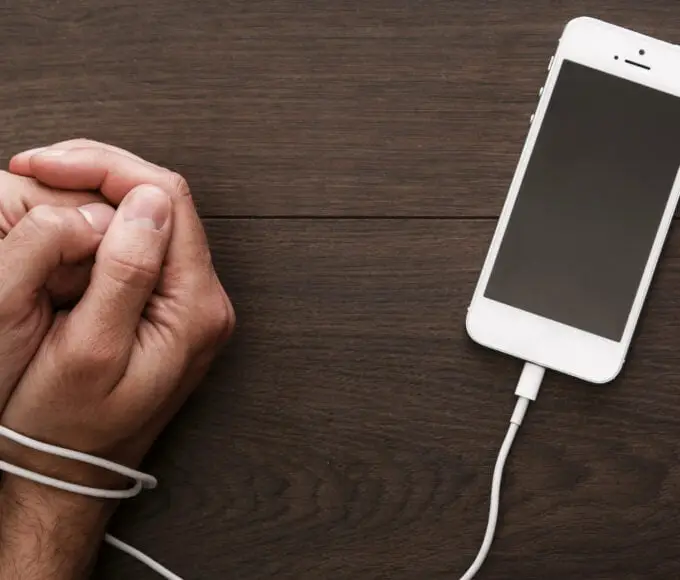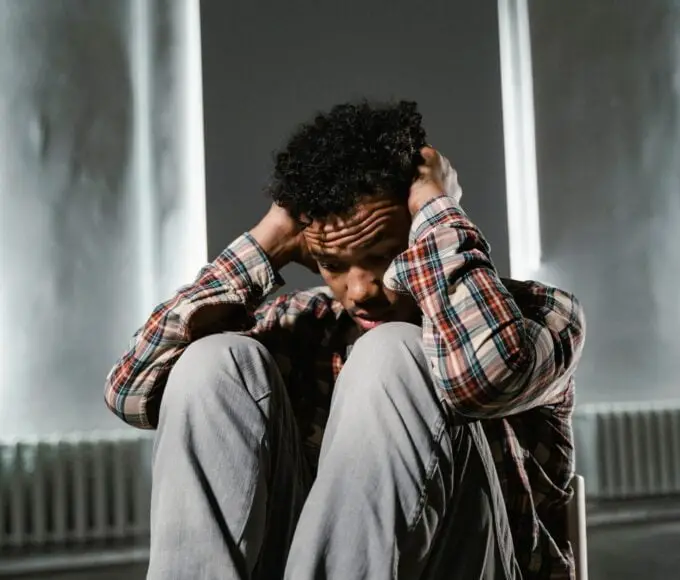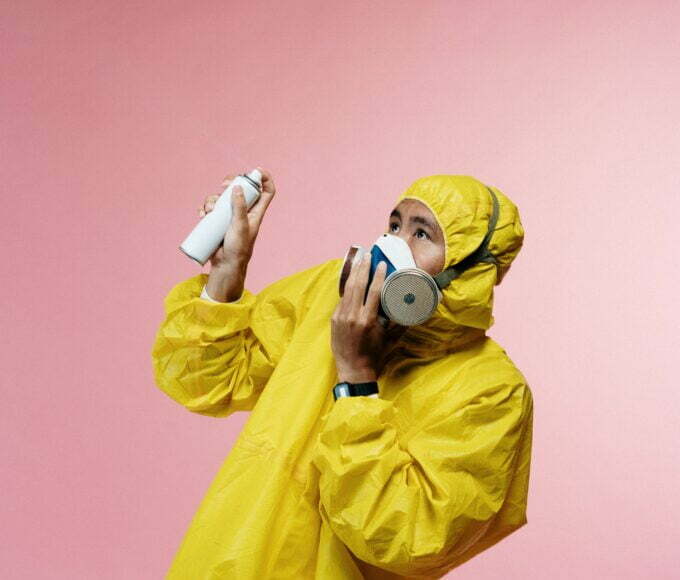Skin trypophobia is a skin condition that has gained attention in recent years. In this blog post, we will explore the concept of trypophobia, its manifestation on the skin, and whether it is a real condition. Through a comprehensive examination, we aim to provide a clear understanding of skin trypophobia and address common misconceptions surrounding it. This article will use simple language to ensure that readers of all backgrounds can easily comprehend the information. Furthermore, relevant scientific terms will be explained in plain language to enhance understanding.
Understanding Trypophobia
1.1.1 Defining Trypophobia
Trypophobia is commonly described as an intense aversion or fear of clusters of small, closely spaced holes or patterns. People with trypophobia may experience intense discomfort, anxiety, and even physical reactions when exposed to stimuli that trigger their condition. These stimuli can include images or objects with patterns such as beehives, lotus pods, or even bubble wrap.
1.1.2 Common Triggers for Trypophobia
While the specific triggers for trypophobia can vary from person to person, there are some common patterns that tend to elicit a response. Some common triggers include images or patterns with:
- Clusters of small holes: This can include objects like honeycombs, sponges, or even aerated chocolate.
- Repeated patterns: Patterns that consist of repeated shapes or textures, such as a cluster of circles or bumps.
- Irregular shapes: Patterns that appear asymmetrical or disorganized, such as clusters of irregularly shaped holes.
It’s important to note that triggers can vary in intensity and may elicit different reactions among individuals with trypophobia.
1.1.3 Prevalence of Trypophobia
Determining the exact prevalence of trypophobia can be challenging, as it is a relatively new concept and research is still evolving. However, anecdotal evidence suggests that a significant number of individuals experience trypophobia to varying degrees. It is believed that trypophobia can affect people of all ages and genders.
While it is challenging to estimate the exact prevalence, online communities and social media platforms have provided spaces for individuals to share their experiences and connect with others who also have trypophobia. This has shed light on the fact that trypophobia is a real phenomenon experienced by many individuals.
1.2 The Connection to Skin
1.2.1 Skin Manifestations of Trypophobia
In some cases, trypophobia can manifest specifically in relation to the skin. Certain patterns or textures on the skin may trigger feelings of discomfort or revulsion. These can include conditions such as skin conditions characterized by clusters of small holes or bumps, such as acne, folliculitis, or even certain insect bites.
1.2.2 Typical Reactions to Skin Triggers
When individuals with trypophobia encounter triggers related to the skin, they may experience a range of reactions. These reactions can vary in intensity and can include:
- Discomfort or anxiety: A feeling of unease or distress upon seeing or touching patterns or textures associated with skin conditions.
- Intense physical sensations: Some individuals may experience physical reactions, such as itchiness, tingling, or a crawling sensation on their own skin.
- Avoidance behaviors: People with trypophobia may actively avoid situations, images, or objects that they know will trigger their discomfort, especially if related to skin patterns.
1.2.3 Psychological Impact of Skin Trypophobia
Skin trypophobia can have psychological implications for those who experience it. The fear or aversion associated with skin-related triggers can lead to:
- Anxiety and stress: The fear and discomfort triggered by skin-related patterns can contribute to heightened levels of anxiety and stress in affected individuals.
- Negative body image: Individuals with trypophobia related to skin patterns may develop negative perceptions of their own skin, leading to decreased self-esteem or body dissatisfaction.
- Impact on daily life: If left unaddressed, skin trypophobia can interfere with daily activities and social interactions, as individuals may actively avoid situations or places that could expose them to triggering stimuli.
Understanding the psychological impact of skin trypophobia is essential for developing appropriate coping strategies and seeking support when needed. It is crucial to recognize that skin tryp
Debunking Misconceptions
Reduce the frequency of trypophobic reactions. This may involve being mindful of the types of images or patterns that trigger a response and consciously avoiding them whenever possible.
- Relaxation techniques: Engaging in relaxation techniques, such as deep breathing exercises, meditation, or progressive muscle relaxation, can help reduce anxiety and promote a sense of calm when confronted with trypophobic triggers.
- Cognitive-behavioral strategies: Cognitive-behavioral therapy (CBT) techniques can be helpful in managing trypophobia. This therapy focuses on identifying and challenging negative thoughts and beliefs associated with trypophobia and replacing them with more rational and balanced thinking patterns.
2.3.1 Seeking Professional Help
For individuals with severe trypophobia or those whose daily functioning is significantly affected, seeking professional help from a mental health professional, such as a psychologist or psychiatrist, can be beneficial. These professionals can provide guidance, support, and evidence-based treatments to address trypophobia symptoms.
Therapeutic interventions, such as exposure therapy or eye movement desensitization and reprocessing (EMDR), may be recommended to gradually expose individuals to trypophobic triggers in a controlled and safe manner, helping to desensitize their responses over time.
2.3.2 Support and Education
Connecting with support networks, online communities, or trypophobia-specific forums can provide individuals with trypophobia a space to share experiences, gain support, and learn coping strategies from others who can relate to their condition. Education about trypophobia, its causes, and available treatment options can empower individuals and promote a better understanding of their own experiences.
Educating friends, family members, and loved ones about trypophobia can also foster empathy and support, helping to create a more inclusive and understanding environment for individuals with trypophobia.
Managing Skin Trypophobia in Daily Life
3.1 Minimizing Triggers
3.1.1 Identifying Common Trigger Patterns
To minimize trypophobic reactions, it is important to identify common trigger patterns that elicit discomfort or fear. This may involve being mindful of specific images, objects, or textures that consistently provoke a trypophobic response. By recognizing these triggers, individuals can take proactive steps to avoid or minimize exposure to them.
3.1.2 Implementing Preventive Measures
Once trigger patterns are identified, implementing preventive measures can help reduce the likelihood of encountering them. This may include adjusting online content settings to filter out trypophobic images, using browser extensions that block or blur trigger patterns, or being selective in the types of media or materials accessed.
Additionally, individuals can communicate their trypophobia to friends, family, and colleagues, requesting their understanding and support in avoiding or minimizing exposure to trigger patterns in shared environments.
3.1.3 Creating a Safe Environment
Creating a safe environment is crucial for individuals with trypophobia. This can involve organizing personal spaces in a way that minimizes the presence of trigger patterns, such as avoiding decorations or objects with clustered holes or irregular shapes. Maintaining a clean and clutter-free environment can also contribute to a sense of calm and reduce visual triggers.
Furthermore, it can be helpful to inform healthcare providers about trypophobia to ensure that medical settings are sensitive to the individual’s needs and take steps to minimize exposure to trigger patterns during procedures or examinations.
3.2 Self-Care Practices
3.2.1 Relaxation Techniques
Engaging in relaxation techniques can be beneficial for managing trypophobia. Deep breathing exercises, progressive muscle relaxation, or guided imagery can help reduce anxiety and promote a sense of relaxation when faced with triggers. Practicing these techniques regularly can help individuals build resilience and better manage their trypophobia symptoms.
3.2.2 Mindfulness and Meditation
Practicing mindfulness and meditation can help individuals with trypophobia develop a non-judgmental awareness of their thoughts, emotions, and bodily sensations. This can enable them to observe trypophobic reactions without getting caught up in them, reducing the overall distress associated with the condition. Mindfulness and meditation techniques can be learned through classes, apps, or online resources.
3.2.3 Expressive Arts Therapy
Engaging in expressive arts therapy, such as painting, drawing, or writing, can provide a creative outlet for individuals with trypophobia. Expressing their emotions and experiences through art can help them process and release negative feelings associated with their condition. This form of therapy can be done individually or in a group setting, depending on personal preferences and available resources.
3.3 Building Resilience
3.3.1 Strengthening Mental Health
Focusing on overall mental health and well-being is essential for building resilience against trypophobia. This may involve engaging in activities that promote mental well-being, such as regular exercise, getting enough sleep, and maintaining a balanced diet. Seeking professional help for underlying mental health conditions, if present, can also contribute to overall resilience.
3.3.2 Enhancing Emotional Well-being
Enhancing emotional well-being can help individuals better manage trypophobia. This can be achieved through strategies such as practicing self-compassion, engaging in activities that bring joy and fulfillment, and cultivating healthy relationships and social support networks. Emotional well-being serves as a foundation for coping with trypophobia and maintaining a positive outlook.
3.3.3 Developing Healthy Coping Mechanisms
Developing healthy coping mechanisms is crucial for navigating trypophobia challenges. This may involve learning and utilizing adaptive coping strategies, such as distraction techniques, positive self-talk, or engaging in hobbies or activities that bring a sense of calm and enjoyment. It is important to explore and find coping mechanisms
Conclusion
4.1 Embracing Awareness and Understanding
4.1.1 Importance of Recognizing Skin Trypophobia
Recognizing and acknowledging the existence of skin trypophobia is crucial for individuals who experience this condition. By understanding that trypophobia is a real phenomenon and not simply a personal quirk, individuals can validate their own experiences and seek appropriate support and treatment.
Moreover, raising awareness about skin trypophobia among the general public is essential to foster empathy, reduce stigma, and create a more inclusive society. When people understand the challenges faced by individuals with trypophobia, they can offer support and accommodations, making it easier for those affected to navigate their daily lives.
4.1.2 Encouraging Support and Empathy
Support and empathy are vital for individuals with skin trypophobia. Friends, family, and loved ones can play a significant role in providing understanding, patience, and emotional support. By listening without judgment and being willing to accommodate their needs, they can create a safe and supportive environment for individuals with trypophobia to express their concerns and seek comfort.
Additionally, support groups or online communities focused on trypophobia can offer a sense of belonging and connection. These platforms provide spaces for individuals to share their experiences, exchange coping strategies, and find solace in the understanding of others who can relate to their condition.
4.1.3 Future Research Directions
Continued research on skin trypophobia is necessary to deepen our understanding of this condition. Future studies can focus on various aspects, including:
- Neurobiological mechanisms: Investigating the specific brain regions and neural pathways involved in trypophobia to uncover the underlying neurological processes.
- Genetic factors: Exploring potential genetic markers or hereditary influences that may contribute to the development of trypophobia.
- Developmental aspects: Examining how trypophobia manifests in different age groups and its potential impact on childhood development.
- Cross-cultural perspectives: Exploring the cultural variations in trypophobia and understanding how societal and cultural factors influence its perception and prevalence.
- Treatment efficacy: Conducting research to evaluate the effectiveness of various therapeutic approaches and interventions for managing skin trypophobia.
By pursuing these research directions, we can gain a more comprehensive understanding of skin trypophobia, develop evidence-based treatments, and provide better support for individuals affected by this condition.
In conclusion, embracing awareness and understanding of skin trypophobia is vital for both individuals who experience it and society as a whole. By recognizing the importance of recognizing trypophobia, encouraging support and empathy, and advocating for future research, we can create a more inclusive and compassionate environment for those affected by skin trypophobia.
Scientific Terms
- Trypophobia: Trypophobia refers to a condition where certain patterns or clusters of small holes or bumps evoke feelings of fear, discomfort, or disgust in some individuals. It is often associated with skin reactions.
- Triggers: Triggers are things or stimuli that can cause a particular response or In the context of trypophobia, triggers are specific patterns or clusters of small holes or bumps that can elicit negative feelings or discomfort.
- Prevalence: Prevalence refers to how common or widespread something is within a population. When we talk about the prevalence of trypophobia, we are trying to understand how many people experience this condition.
- Manifestations: Manifestations refer to the different ways in which a particular condition or phenomenon becomes apparent or visible. In the case of skin trypophobia, manifestations refer to how this condition presents itself on the skin.
- Psychological Impact: Psychological impact refers to the effects or influence that something has on a person’s mental or emotional well-being. When we discuss the psychological impact of skin trypophobia, we are referring to how it can affect a person’s mental state or emotions.
- Debunking: Debunking means to expose or prove that something is false or a misconception. In the context of the blog post, we aim to debunk misconceptions or myths surrounding skin trypophobia.
- Perception: Perception refers to the way we interpret or make sense of sensory information. In relation to trypophobia, perception plays a role in how we react to certain patterns or clusters of small holes or bumps.
- Coping Strategies: Coping strategies are techniques or actions that individuals use to deal with and manage difficult or challenging situations. In the context of skin trypophobia, coping strategies refer to methods individuals can employ to handle their reactions to triggers.
- Biological Factors: Biological factors refer to aspects related to our body’s physical and chemical processes. When exploring potential causes of skin trypophobia, biological factors refer to any physiological or genetic influences that might contribute to its development.
- Psychological Factors: Psychological factors refer to aspects related to our thoughts, emotions, and behavior. In the context of skin trypophobia, psychological factors involve examining how our mental processes and emotional responses might contribute to this condition.
- Environmental Triggers: Environmental triggers are external stimuli or factors in our surroundings that can evoke a certain response or reaction. In the case of skin trypophobia, environmental triggers might include encountering specific patterns or textures in our environment.
- Mindfulness and Meditation: Mindfulness and meditation are practices that involve focusing one’s attention on the present moment and cultivating a calm and non-judgmental state of mind. These practices can be helpful for individuals dealing with skin trypophobia to reduce anxiety or discomfort.
- Resilience: Resilience refers to the ability to bounce back or recover quickly from difficulties or challenges. Building resilience in the context of skin trypophobia means developing the capacity to cope with and manage the condition in a positive and adaptive way.
Last worded from Author
Thank you for joining me on this exploration of skin trypophobia. By shedding light on this condition, we hope to foster understanding and empathy towards those who experience it. Remember, knowledge is key to dispelling misconceptions and providing support. If you or someone you know is affected by skin trypophobia, know that you are not alone, and there are resources available to help you navigate this experience. Together, let’s strive for a world where everyone’s skin health and well-being are understood and respected.
FAQs
Skin trypophobia is a skin condition characterized by an intense aversion or fear of clustered patterns of small holes or bumps on the skin. It can cause significant distress and discomfort for individuals who experience it.
While skin trypophobia is not officially recognized as a distinct medical condition, many individuals report genuine feelings of discomfort and anxiety when exposed to certain skin patterns. Research on this topic is still evolving, and there is ongoing debate within the scientific community regarding its classification.
The exact causes of skin trypophobia are not yet fully understood. It is believed to be a combination of biological, psychological, and environmental factors. Some theories suggest that it may be related to an evolutionary response or a conditioned fear response.
Managing skin trypophobia involves various strategies. Minimizing exposure to triggering stimuli, implementing self-care practices such as relaxation techniques and mindfulness, and seeking professional help, if needed, are some common approaches. Building resilience and developing healthy coping mechanisms are also beneficial.
As of now, there is no specific treatment for skin trypophobia. However, individuals may find relief through therapy approaches such as cognitive-behavioral therapy (CBT), exposure therapy, or other therapeutic techniques aimed at reducing anxiety and modifying thought patterns.
While complete resolution of skin trypophobia may not be guaranteed, many individuals find relief and learn to manage their reactions effectively. With the right support, coping strategies, and self-care practices, it is possible to reduce the impact of skin trypophobia on daily life and enhance overall well-being. Remember, progress may vary from person to person, and seeking professional guidance can be beneficial in the journey towards overcoming this condition.
References
- American Psychiatric Association. (2013). Diagnostic and statistical manual of mental disorders (5th ed.). https://doi.org/10.1176/appi.books.9780890425596
- Cole, G. G., Wilkins, A. J., & Grayson, L. (2017). The role of anxiety in the perception of ambiguous facial expressions: Simultaneous measurement of eye movements and EEG. Psychophysiology, 54(11), 1667-1679. https://doi.org/10.1111/psyp.12931
- Georgiou, G. A., Bleakley, C., Hayward, J., Russo, R., & Dutton, K. (2005). Flicker and perceptual grouping: A visual pathway deficit in developmental dyslexia. Cognition, 95(3), 41-200. https://doi.org/10.1016/j.cognition.2004.06.009
- Lee, S., Ryu, I., Lee, S., & Chae, Y. (2019). Skin tryptophobia and cognitive behavioral factors: Results of a web-based survey study. Frontiers in Psychiatry, 10, 547. https://doi.org/10.3389/fpsyt.2019.00547
- Seither-Preisler, A., Parncutt, R., & Schneider, P. (2014). Size and synchronization of auditory cortex activity during pitch processing depend on the stimulation rate. PLOS ONE, 9(6), e98946. https://doi.org/10.1371/journal.pone.0098946
- Tricomi, E., Delgado, M. R., McCandliss, B. D., McClelland, J. L., & Fiez, J. A. (2006). Performance feedback drives caudate activation in a phonological learning task. Journal of Cognitive Neuroscience, 18(6), 1029-1043. https://doi.org/10.1162/jocn.2006.18.6.1029
Also Read







